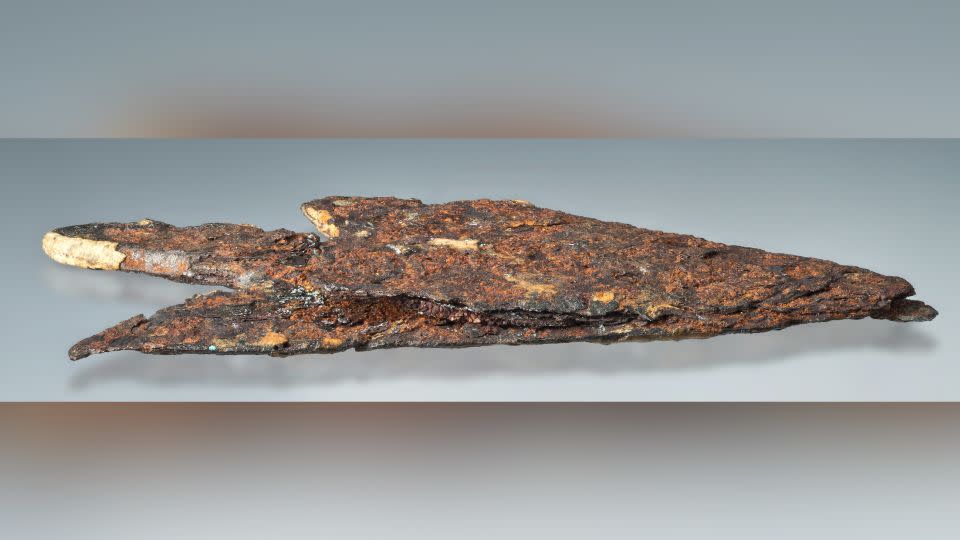Arrowhead made from meteorite 3,000 years ago found near lake in Europe
A Bronze Age arrowhead unearthed in Switzerland was made from a meteorite, a new study has found.
Dating back to between 900 and 800 BC, the 39-millimeter-long (1.5-inch-long) arrowhead was found on a pile-dwelling site in Mörigen on Lake Biel, Switzerland, during excavations in the 19th century, according to the study conducted by a team of researchers at the Natural History Museum of Bern.
The nearly 3,000-year-old artifact was created with iron from a meteorite that landed in Estonia, the study noted. This indicates that meteoritic iron was traded in Europe by 800 BC or earlier, the researchers said, adding how unusual it is to find meteoritic iron used so early in history.
“Such evidence of an early use of meteoritic iron is extremely rare,” according to a news release on the discovery.
At the time, humans had not yet started to smelt iron from oxide ores, but some metallic iron could be found in the impact fields of meteorites, according to the study.
While objects made using meteoritic iron have been found in Turkey, Greece, Syria, Iraq, Lebanon, Egypt, Iran, Russia and China, such artifacts have previously only been discovered at two sites in central and western Europe, both in Poland.

Now, with the arrowhead finding, researchers have confirmed Mörigen as a third.
Meteorite origins
Experts previously thought the iron used in the arrowhead came from the Twannberg meteorite, which fell to Earth just a few kilometers from the pile-dwelling.
However, analysis of the iron showed that this was not the case, nor was the material from a meteorite that fell in Poland, according to the study.
There are only three known meteorites with a similar chemical composition in Europe, but researchers say that the most likely source was one in Kaalijarv, Estonia, as the meteorite hit around 1500 BC and “produced many small fragments,” according to the study.
Some of these fragments would later have moved southwest to Switzerland along trade routes, lead study author Beda Hofmann, head of the Earth sciences department at the Natural History Museum of Bern, told CNN.
“Trade across Europe during the Bronze Age is a well-established fact: Amber from the Baltic (like the arrowhead, presumably), tin from Cornwall, glass beads from Egypt and Mesopotamia,” she said via email.
“(It) probably just took a bit longer than today, and the masses were a few tons and not millions (of tons),” Hofmann added.
While most people in the Bronze Age pile-dwelling villages in the Swiss lakes would have devoted their time to agriculture, hunting and fishing, there is evidence — including molds for casting bronze found at Mörigen — that some people had developed specialized skills, she said.
The study was published in the Journal of Archaeological Science.
For more CNN news and newsletters create an account at CNN.com

